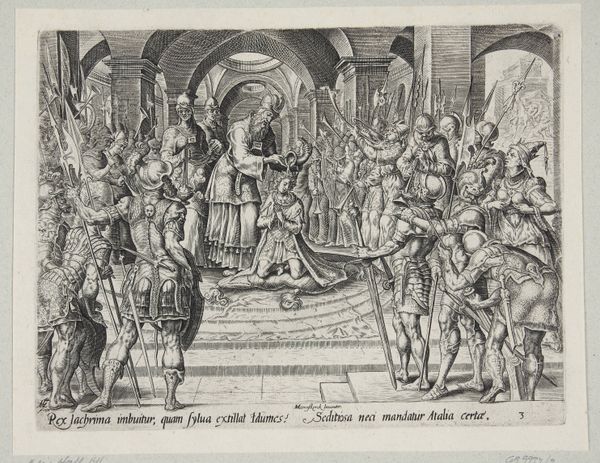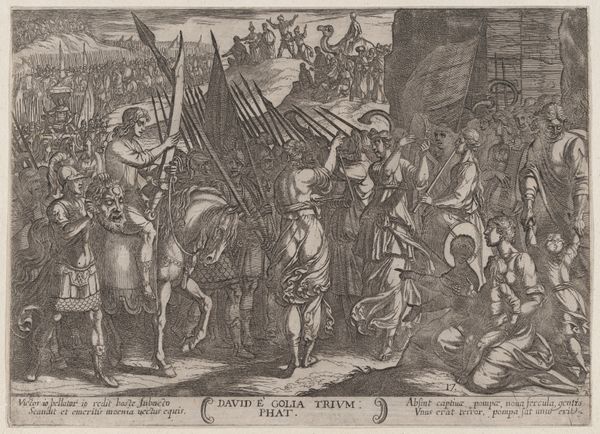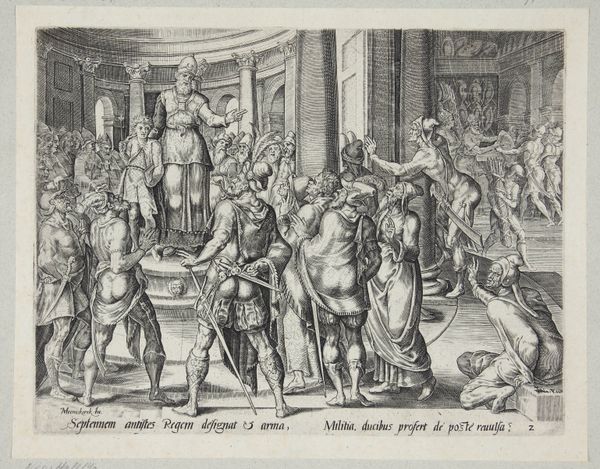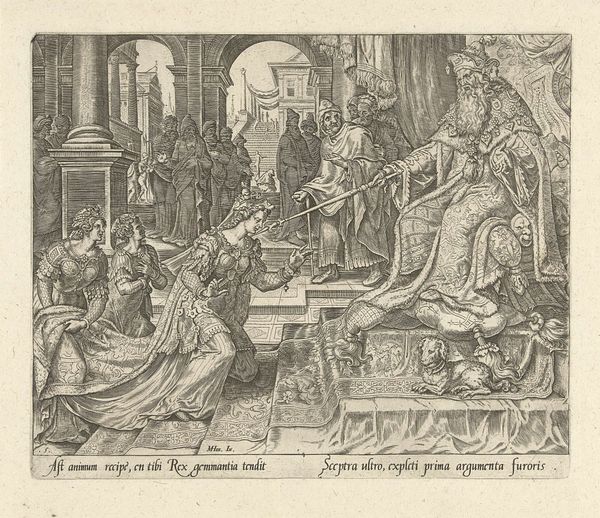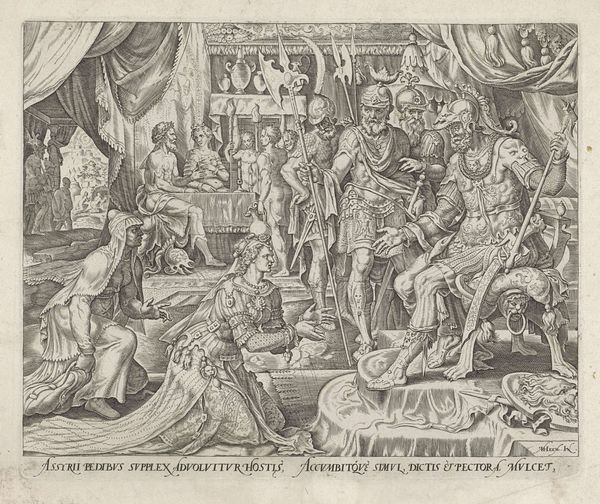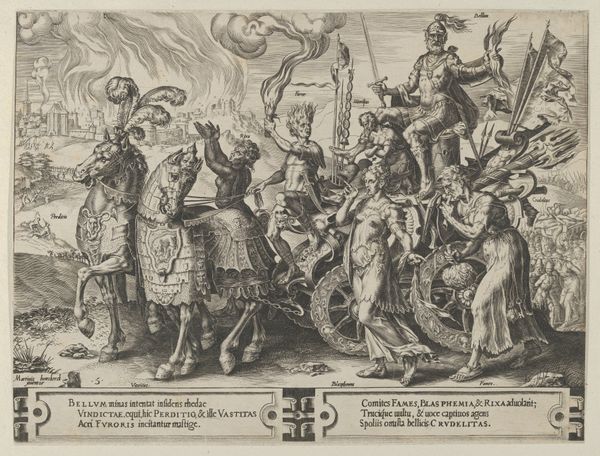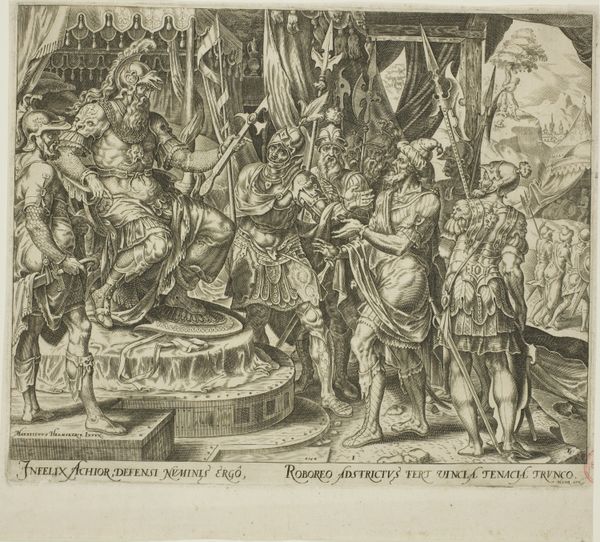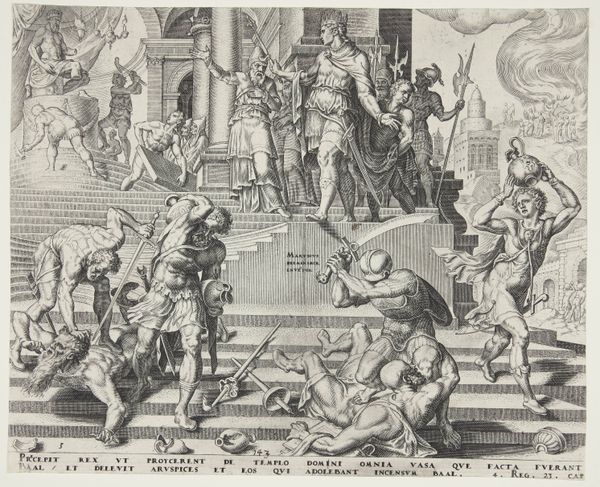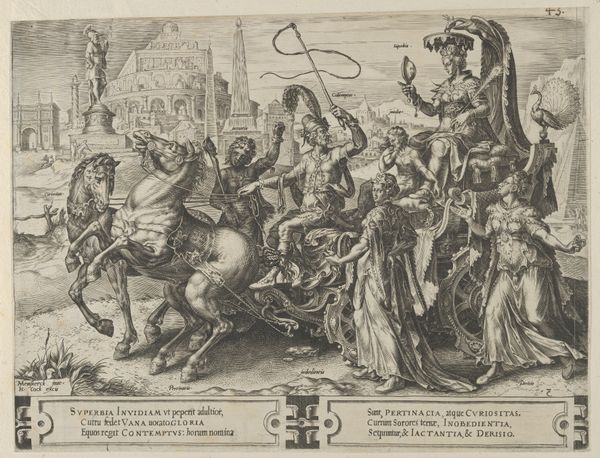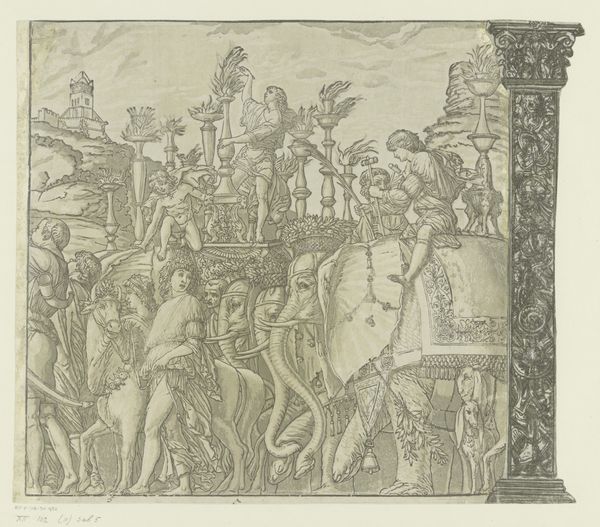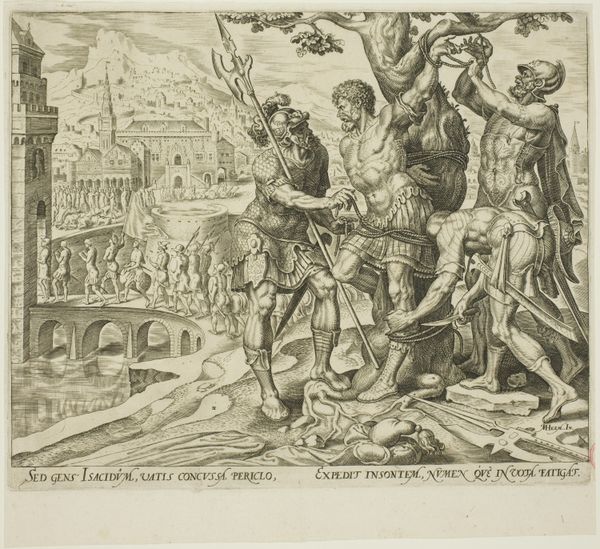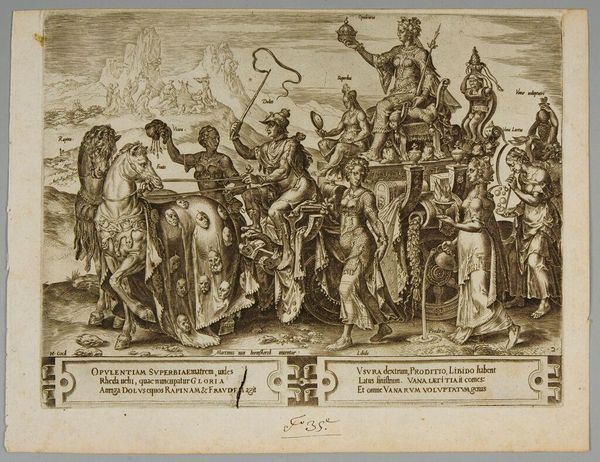
Dimensions: height 205 mm, width 248 mm
Copyright: Rijks Museum: Open Domain
Curator: Here we have "Judit toont het hoofd van Holofernes aan het volk," an engraving by Philips Galle, dating back to 1564. Editor: It strikes me immediately as a study in contrasts—the stark, almost graphic violence of the decapitated head against the relative serenity of Judith's figure. There's also that background! A whole city is either celebrating or going up in flames. It's hard to tell which. Curator: Indeed. This print, currently housed here at the Rijksmuseum, exemplifies the Baroque style, albeit with a firm foot still planted in the Renaissance tradition. Notice the pronounced figuration and the clear narrative focus? This piece engages with the theme of history, but does so in a way designed to instill civic and perhaps even moral lessons. Editor: Absolutely. Judith herself, holding Holofernes' head, stands as a powerful symbol. Beyond the literal reading, what resonates is the victory of virtue over vice, and the triumph of the seemingly weak against brute force. It's potent stuff, visually and psychologically. What I find interesting is the positioning next to the moon goddess figure. She mirrors Judith in dress, yet has more traditionally pagan attributes with her torches. There seems to be an exchange between them of equal recognition. Curator: You’ve pinpointed an interesting point regarding reception in a polarized Europe. The engraving also offers a fascinating commentary on the role of leadership and the potential consequences of tyranny. In the context of the late Renaissance, these visual tropes were being re-evaluated to negotiate new modes of self-governance in a number of European polities. How to represent leaders for political change became especially critical. Editor: The image certainly speaks to those issues. Beyond the socio-political implications, I find myself drawn back to Judith’s expression. Her demeanor seems so detached and contemplative, in the middle of this spectacle. The symbolism really underscores the emotional distance needed to carry out such acts in the service of ideals. It carries over to how one might also view the changing power dynamics in the time in which this work was made. Curator: Precisely. Considering Galle’s historical moment enriches the artwork tremendously, underscoring the complex interplay between imagery, ethics, and public life in 16th-century Europe. Editor: And that's something an image like this can still stir in us today. Seeing these symbols laid bare invites us to remember how values of morality shift and change over time.
Comments
No comments
Be the first to comment and join the conversation on the ultimate creative platform.
